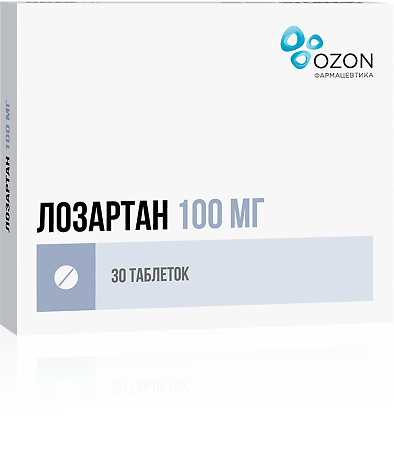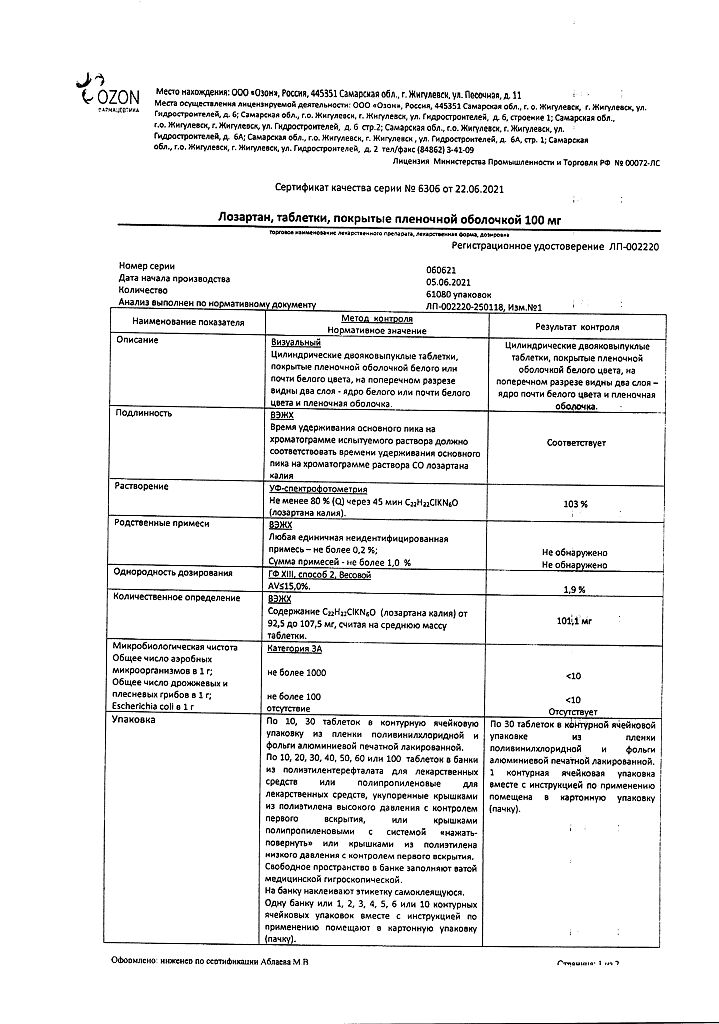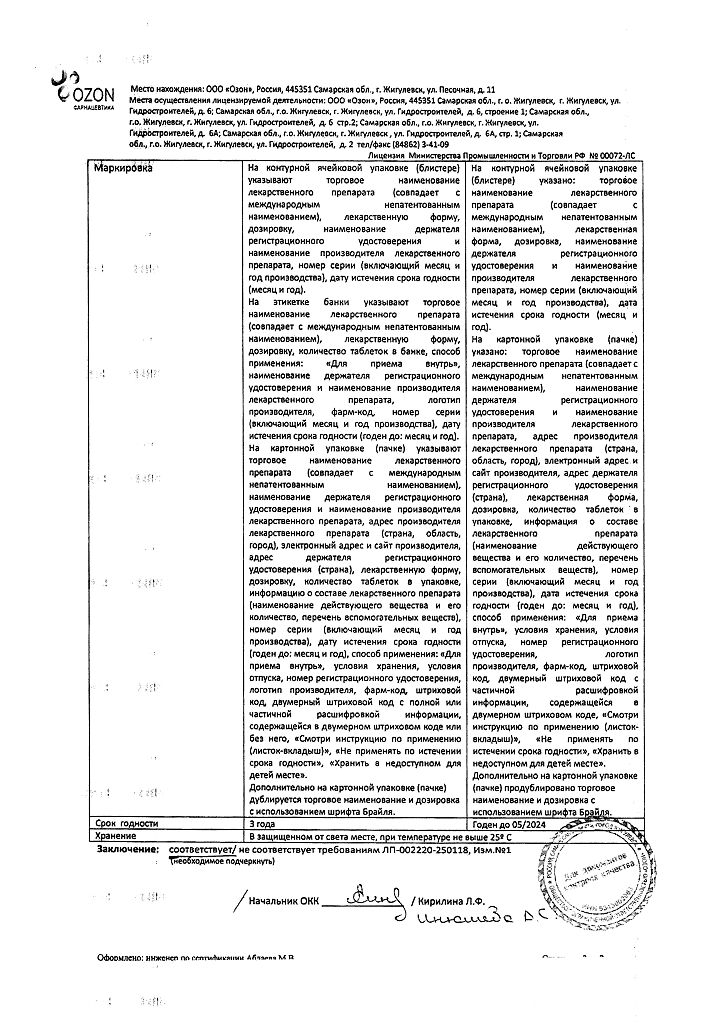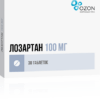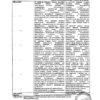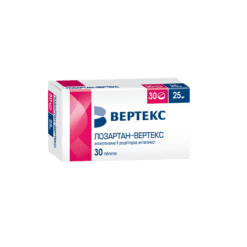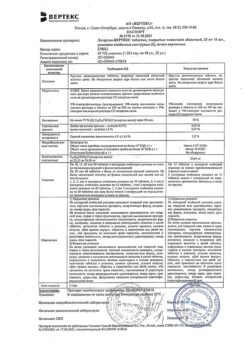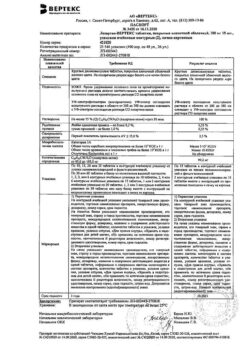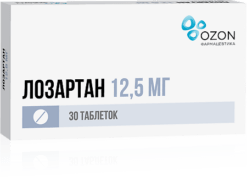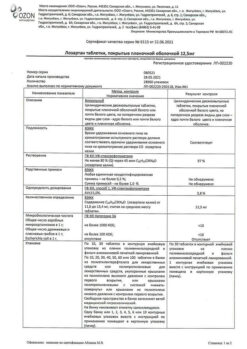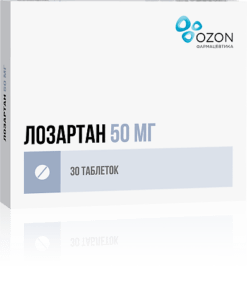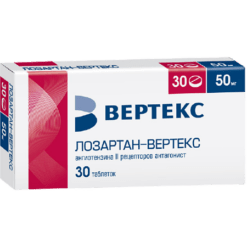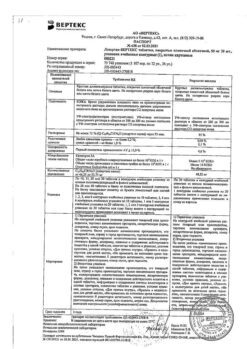No products in the cart.
Losartan, 100 mg 30 pcs
€5.24 €4.65
Description
Lozartan is a specific angiotensin II receptor antagonist (AT1 tin) for oral administration. Angiotensin II selectively binds to AT1 receptors located in many tissues (vascular smooth muscle tissues, adrenal glands, kidneys and heart) and has several important biological functions including vasoconstriction and aldosterone release. Angiotensin II also stimulates smooth muscle cell overgrowth.
Lozartan and its pharmacologically active metabolite (E 3174) both in vitro and in vivo block all physiological effects of angiotensin II regardless of the source or route of synthesis. Losartan selectively binds to AT1 receptors: it neither binds nor blocks receptors for other hormones and ion channels that play an important role in the regulation of cardiovascular function. In addition, losartan does not inhibit angiotensin-converting enzyme (ACE), which promotes bradykinin degradation, so bradykinin-mediated side effects (e.g., angioedema) are quite rare.
When using losartan, the lack of negative feedback effects on renin secretion results in increased plasma renin activity. Increased renin activity results in increased plasma angiotensin II concentrations. However, antihypertensive activity and decreased plasma aldosterone concentration persist, indicating effective angiotensin II receptor blockade. After discontinuation of losartan, plasma renin activity and angiotensin II concentration decreased within 3 days to baseline values observed before the start of the drug.
Lozartan and its active metabolite have a high affinity for angiotensin II receptors (AT1 type).
The plasma concentrations of losartan and its active metabolite and the antihypertensive effect of losartan increase with increasing drug dose.
The maximum antihypertensive effect develops 3-6 weeks after initiation of the drug.
In patients with arterial hypertension, proteinuria (more than 2 g per day), without diabetes mellitus, use of the drug significantly reduces proteinuria, albumin and immunoglobulin G (IgG) excretion.
In postmeonasal women with arterial hypertension taking losartan at a dose of 50 mg/day for 4 weeks, no effect of therapy on renal and systemic prostaglandin levels was detected.
Lozartan has no effect on autonomic reflexes and no lasting effect on plasma norepinephrine levels.
In patients with arterial hypertension, losartan in doses up to 150 mg daily does not cause clinically significant changes in triglyceride, total cholesterol and high-density lipoprotein cholesterol concentrations. At similar doses, losartan has no effect on fasting blood glucose concentrations. Lozartan has been shown to reduce serum uric acid concentrations (typically less than 0.4 mg/dL) that persist during long-term therapy. In controlled clinical trials involving patients with arterial hypertension, there have been no cases of drug withdrawal due to an increase in serum creatinine or potassium.
Pharmacokinetics
Intake
In oral administration, losartan is well absorbed from the gastrointestinal tract. The systemic bioavailability of losartan is approximately 33%; food intake does not affect the bioavailability of losartan. Mean maximum concentrations of losartan and its active metabolite are reached after 1 h and 3-4 h, respectively.
Distribution
Lozartan and its active metabolite bind to plasma proteins (mainly to albumin) by more than 99%. The volume of distribution of losartan is 34 liters. Losartan practically does not penetrate through the blood-brain barrier.
Metabolism
Lozartan undergoes a “primary passage” effect through the liver, megabolized with the participation of cytochrome P450 isoenzyme CYP2C9. Approximately 14% of the intravenous or oral dose of losartan is converted to its active metabolite (EXP3174) with a carboxylic group. Biologically inactive metabolites are also formed: two major metabolites (as a result of hydroxylation of the side butyl chain) and a less significant one, N-2-tetrazol-glucuronide.
The plasma clearance of losartan and its active metabolite is 600 mL/min and 50 mL/min, respectively. Renal clearance of losartan and its active metabolite is approximately 74 mL/min and 26 mL/min, respectively. When losartan is taken orally, approximately 4% of the dose is excreted unchanged by the kidneys and up to 6% of the dose is excreted by the kidneys as an active metabolite. Losartan and its active metabolite have linear pharmacokinetics when administered orally in doses up to 200 mg of losartan. After oral administration, plasma concentrations of losartan and its active metabolite decrease polyexponentially with a final T1/2 of approximately 2 and 6-9 h, respectively.
The excretion of losartan and its metabolites occurs in the bile and the kidneys. After ingestion of 14C-labeled losartan, approximately 35% of the radioactive label is detected in the urine and 58% in the feces.
Pharmacokinetics in Special Patient Groups
Plasma concentrations of losartan and its active metabolite in elderly male patients with arterial hypertension are not significantly different from those in younger male patients with arterial hypertension.
In patients with mild to moderate alcoholic cirrhosis taking losartan orally, plasma concentrations of losartan and its active metabolite were 5 and 1.7 times (respectively) higher than in young healthy male volunteers.
Plasma concentrations of losartan in patients with creatinine clearance above 10 mL/min did not differ from those in patients with normal renal function. In patients requiring hemodialysis, the area under the concentration-time curve (AUC) is approximately 2 times greater than in patients with normal renal function. Plasma concentrations of the active metabolite are unchanged in patients with impaired renal function or in patients on hemodialysis. Losartan and its active metabolite are not eliminated from the bloodstream by hemodialysis.
Indications
Indications
Active ingredient
Active ingredient
Composition
Composition
Active ingredient: potassium losartan 100 mg;
Excipients: lactose monohydrate 190.1 mg, microcrystalline cellulose 57 mg, povidone 13.3 mg, magnesium stearate 3.8 mg, croscarmellose sodium 15.8 mg.
Film coating composition: opadray II 85F48105 White 12 mg, including polyvinyl alcohol 5.628 mg, macrogol-3350 2.832 mg, talc 2.088 mg, titanium dioxide 1.452 mg.
How to take, the dosage
How to take, the dosage
Lozartan is taken orally, in adults, regardless of meals, once daily.
In arterial hypertension, 50 mg; if necessary, a gradual increase in the dose is possible (in some cases, up to a maximum daily dose of 100 mg). In chronic heart failure – 12.5 mg with a gradual increase in 2 steps (after 1 week – to 25 mg and after another 1 week – 50 mg) to the usual maintenance dose of 50 mg.
Contraindications
Contraindications
Hypersensitivity, pregnancy, breastfeeding.
Side effects
Side effects
Nervous system and sensory organs: â¥1% – dizziness, asthenia/fatigue, headache, insomnia;
Respiratory system: â¥1% – nasal congestion, cough, upper respiratory tract infections (high body temperature, sore throat, etc.).), sinusopathy, sinusitis, pharyngitis;
Gastrointestinal system disorders: â¥1% – nausea, diarrhea, dyspeptic complaints, abdominal pain;
Musculoskeletal system disorders: â¥1% – cramps, myalgia, pain in the back, chest, legs;
Cardiovascular and blood (hematopoiesis, hemostasis):
Urinary system disorders:
Skin disorders:
Allergic reactions:
Other: â¥1% – hyperkalemia;
Similarities
Similarities
Additional information
| Conditions of storage | In a dry, light-protected place at a temperature not exceeding 25 °C. |
|---|---|
| Manufacturer | Ozon, Russia |
| Medication form | pills |
| Brand | Ozon |
Other forms…
Related products
Buy Losartan, 100 mg 30 pcs with delivery to USA, UK, Europe and over 120 other countries.

